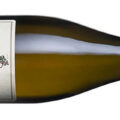Scrolling through my Instagram feed, you may think that I am a bit of an Assyrtiko fan girl and you’d not be wrong. Fuelled by my love of all things Greek, I studied the language for two years and embarked on my own little Greek Odyssey. It seemed that the romantic idea of blue skies, clear waters and idyllic villages would appeal in the same way that a Provençale rosé evokes images of lavender fields and glamorous harbours. Wine can help facilitate this, something that is not lost on winery […]


